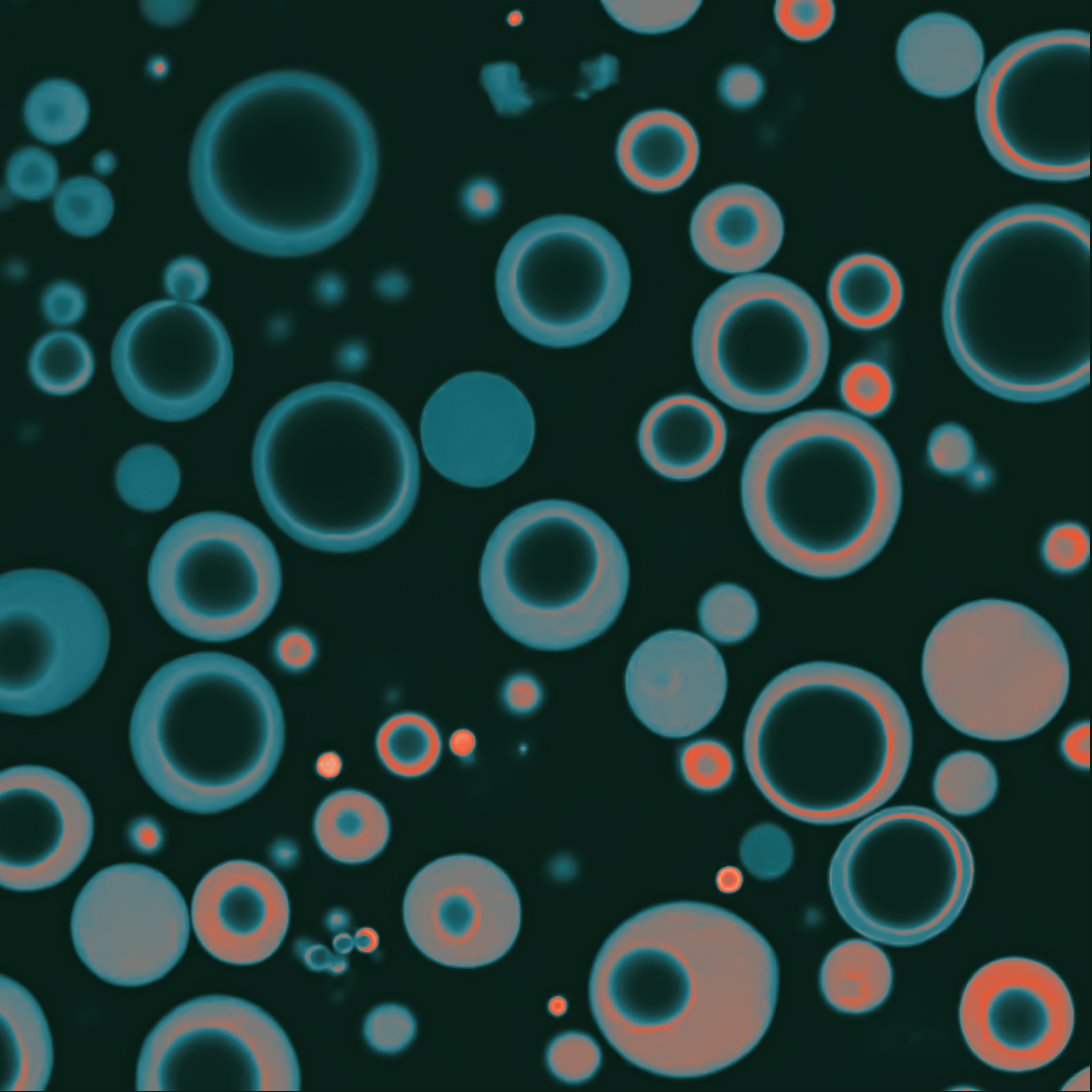Anomalous diffusion in biomolecular condensates

An Unexpected Discovery
Three years ago, when I began my research on DNA condensates, a mesoscale DNA colloidal material developed in our group, the first task assigned to me by my supervisor, Prof. Andreas Walther, was simple: “Make the DNA condensates larger.”
One afternoon, just before our group meeting, I prepared some new samples, stained them with a DNA-binding oligo-dye conjugate, and checked them under the fluorescence microscope. I expected to see larger structures. Instead, something completely unexpected caught my eye: a sharp, brightly fluorescent front of the DNA dye staying in the middle of the condensates. By that time, I had absolutely no clue what is going on there. Since the group meeting was about to start in another 5 minutes, I had to stop my thinking about this intriguing phenomenon, but decided to record a video to further document what would happen next.
After the meeting, I returned to the microscope lab and watched the video. What I saw was surprising: A distinct high intensity diffusion front propagating inward, unlike the blurry, classical Fickian diffusion one would expect. It reminded me of a seminar I had attended during my Master's thesis in Prof. Günter Reiter’s group at the University of Freiburg, where we discussed case II diffusion, a mechanism describing how small molecules enter bulk polymer materials. I realized that something similar might be happening in my system.
As I continued analyzing the video, Andreas came by to check. When I showed him the video and explained the concept of case II diffusion, he was excited: “Weixiang, this is probably the most exciting science I have heard today!”. I no longer remember what was discussed in the group meeting, but I still vividly recall the excitement we both shared at that moment.

An Interdisciplinary Research Journey
Why do we observe a non-Fickian diffusion mechanism? While classical diffusion is governed by Brownian motion, complex systems like ours are also influenced by polymer relaxation and binding, which can lead to non-Fickian transport and results in different diffusion behavior at macroscopic level.
After about a year of investigation, the picture became clearer. Before diffusion starts, the DNA condensates are in a glassy, arrested state/solid-like, akin to aged condensates observed in cells. As the DNA-dye conjugate diffuses in, it binds to the condensate matrix and locally fluidizes the matrix. This binding induces a glassy-to-dynamic transition that enables the sharp diffusion front to emerge. Furthermore, the dye-induced hybridization from ssDNA to dsDNA causes local swelling, creating a transient high-intensity front at the interface.
I am fortunate to work in a highly interdisciplinary lab with researchers from various backgrounds. Encouraged by Andreas, I collaborated with my colleague Dr. Brigitta Dúzs, who had focused on reaction–diffusion systems during her PhD. Together, we developed a robust model that not only reproduced the observed phenomenon but also guided further experiments. This helped us confirm that the glassy-to-dynamic transition and polymer relaxation are critical in inducing and shaping the sharp front.
One of the most exciting findings is that we can tune the diffusion mode, from ballistic wave diffusion to classical Fickian diffusion, simply by adjusting the magnesium concentration in solution to tune the condensate properties. This has largely contributed to a quantitative understanding of the phenomenon.
To make the research complete, Mainz, as a polymer research center in Germany, provides all facilities we need for such interdisciplinary research. My research benefited from the support of the local research community across the University of Mainz and Max-Planck Institute for Polymer Research.
The Concept of Ballistic Wave Diffusion
About the name we choose for the new diffusion mechanism: Initially, we referred to this new mechanism as case III diffusion, continuing the terminology from case II diffusion in polymer physics. But we later decided on the name ballistic wave diffusion, which more accurately conveys the physics: “ballistic” captures the linear speed of the front propagation, while “wave” describes its sharp, wave-like profile, reminiscent of a propagating wave.
The Story Continues
As polymer scientists, we are now actively developing the DNA condensate system to harness this diffusion mechanism for programmable material functions and applications. The broader implications extend beyond polymer science and DNA nanotechnology. We believe that there is still a large cherry on the cake for biologists to further explore and investigate such diffusion mechanism inside cells in biomolecular condensates.
Follow the Topic
-
Nature Nanotechnology

An interdisciplinary journal that publishes papers of the highest quality and significance in all areas of nanoscience and nanotechnology.


Please sign in or register for FREE
If you are a registered user on Research Communities by Springer Nature, please sign in